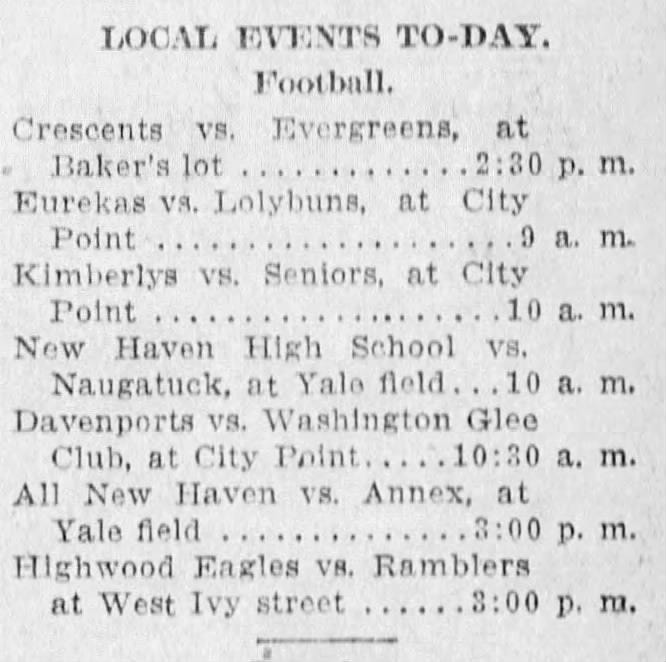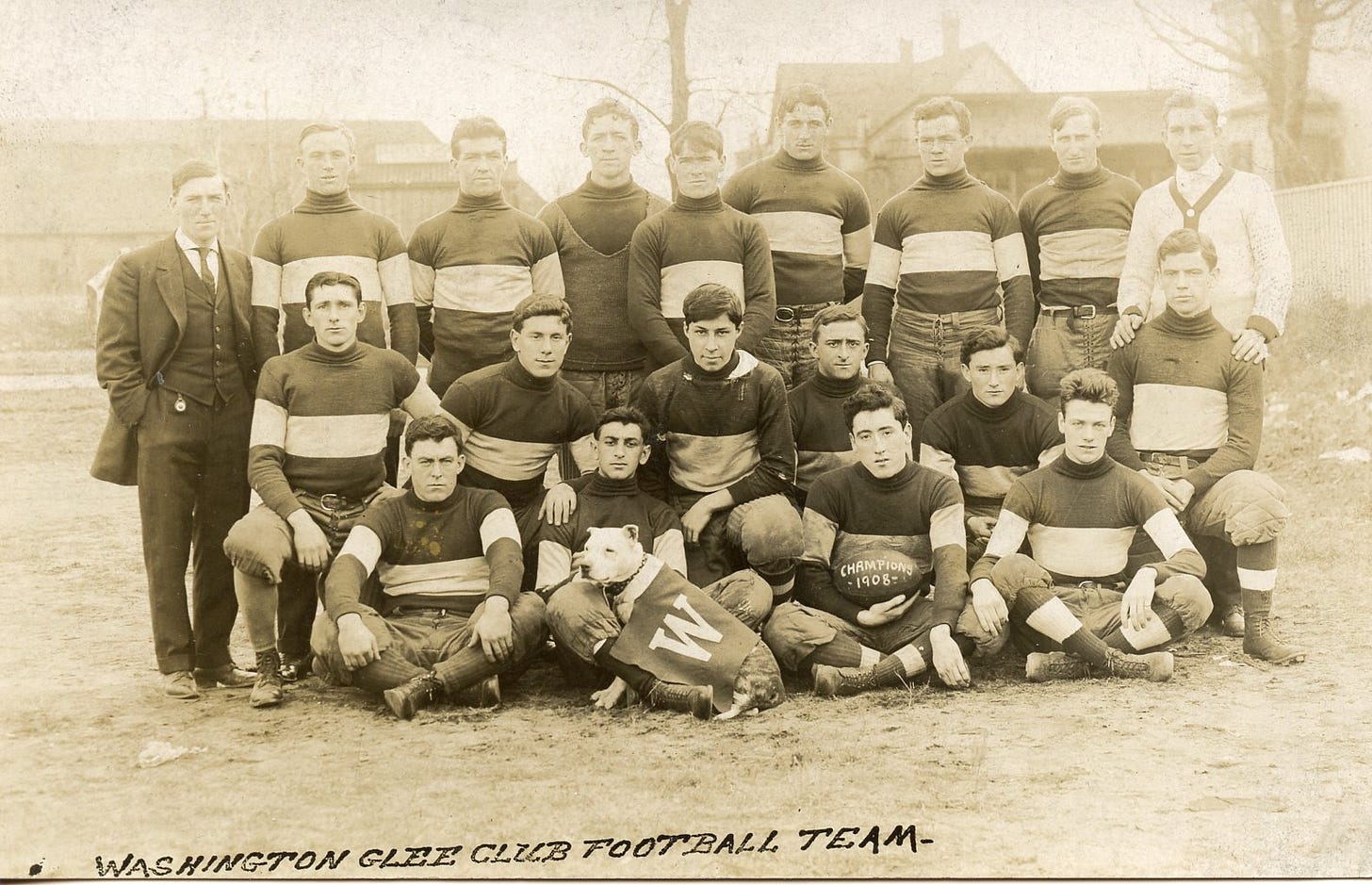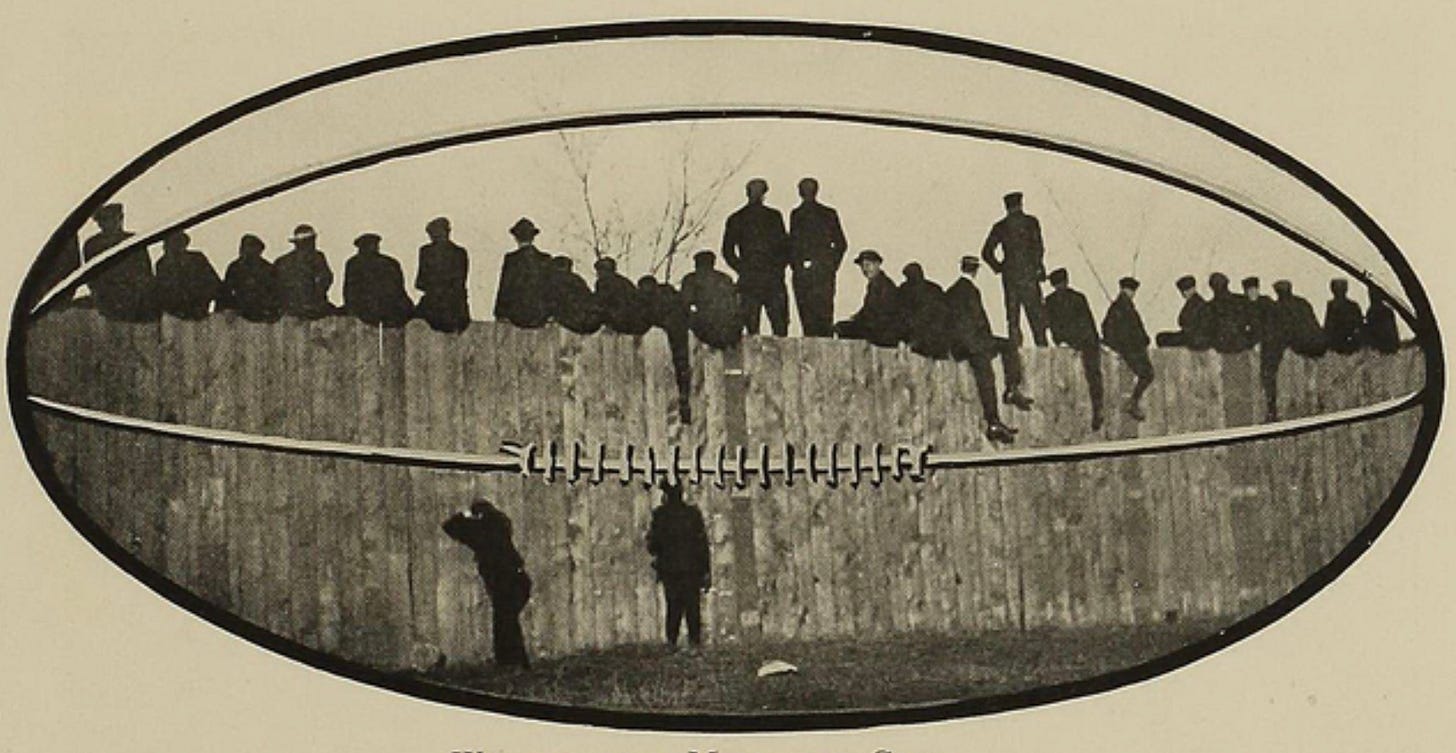The Washington Glee Club's Monumental Season
I cannot tell a lie. As much fun as it is uncovering information about old-time Yale, Chicago, or Stanford teams, doing the same with small-town or neighborhood club teams like the Washington Glee Club is often more fun. The history of those teams and their contribution to football are vastly underappreciated. Youth, prep, town, and semi-pro teams were vital to the quality and growth of the college and pro games, but the contributions of these lesser teams get little play, just as the Power Five teams and the NFL dominate conversations today.
While researching football history, I’ve come across teams representing a range of organizational types. Still, I had not heard of a glee club football team until I came across an RPPC of the 1908 Washington Glee Club champion team, but the name intrigued me, so I bought the image, assuming I could find some information about them.
When I started the research, I incorrectly assumed the team represented a choir in Seattle. However, I could not find information about the University of Washington's glee club football team. Widening my search led me to the other side of the country, where it turns out that Washington Avenue is a main thoroughfare running through The Hill neighborhood of New Haven, Connecticut. A glee club for adults was formed in the early 1890s. They had junior sports teams by the early 1900s, and the Glees were among the half-dozen clubs to form a football league in 1907 that included teams from New Haven neighborhoods and surrounding towns. Over time, the Glees’ success led them to compete with teams outside New Haven and Connecticut. And that is where things get interesting.
Tackle football club teams and leagues with young adult players are nonexistent today outside our high schools and colleges, but they were common before the 1930s. Like the local bands that provided entertainment in the park on Friday nights, young folks formed athletic clubs to amuse themselves and their neighbors. Even in a city like New Haven, where Yale played some of the nation's best football, working-class folks were not always fans or could not afford a ticket. Instead, their money went to the local team to help pay their expenses.
Most neighborhood and town teams stayed purely local. Others went the semi-pro route with a local business offering day jobs to attract players, while others turned pro, offering guaranteed money to their stars. The Racine (now Arizona) Cardinals, Green Bay Packers, Chicago Bears, and other early NFL teams emerged from this stew of teams.
Returning to the 1908 Washington Glee Club team, their first known victory came over New Haven High School in a game played at Yale Field. Next, they beat the Echoes, the Elms of Bridgeport, and the Pawnees of Meridien before an early November matchup with the Clintons. The Glees scored that game's only touchdown but won by forfeit when the Clintons walked off the field following a disputed fourth down. (Like the fifth-down plays that pop up here and there, pre-1912 football had a few fourth-down play disputes.) The Glees' regular season ended on Thanksgiving morning when they met and thrashed the trash-talking Davenports 12-0 at City Point to earn the league championship, a title no one could ever take from them.

Over the next 11 years, the club continued fielding football teams, claiming several state championships and earning a reputation as one of the best teams in New England. Although some of their top competitors used ringers, the Glees appear to have expanded beyond neighborhood players but stayed true to New Haven-area talent, some being former college football players or minor league baseball players. Likewise, their competition shifted from New Haven neighborhood teams to Connecticut semi-pro teams such as Remington Arms.
At the end of the Teens, the Glees also shifted their games to Weiss Park, the baseball home of the semi-pro New Haven Colonials and New Haven Weissman, owned by George Weiss, a local promoter. Weiss, a local boy who spent the 1912 academic year at Yale, enticed Ty Cobb to play in an exhibition game in New Haven in 1916. In 1919, he arranged for Cobb to play with the local team in a game with the Boston Red Sox four days after the Sox won the World Series. The teams played to a 3-3 tie in a game in which Cobb doubled off Red Sox rookie pitcher Babe Ruth.

The baseball detour connects back to the Washington Glee Club team due to George Weiss arranging for the Glees to finish the 1920 season with a game against the Canton Bulldogs, an American Professional Football Association (AFPA) team featuring Jim Thorpe, among others. The AFPA became the NFL in 1921, during a time its teams played a mix of league and non-league games. Weiss offered a guarantee for Canton to play the Glees in New Haven on Sunday, December 5, the day after playing a league game against the Buffalo Pros at the Polo Grounds in Manhattan.
The Glees were a good team in 1920, giving up a single score during the season and beating the Providence Steam Roller, who joined the NFL in 1925 and won the 1928 championship. Still, the Glees were not an AFPA-calibre team in 1920, so a game with the Canton Bulldogs represented a significant challenge. Nevertheless, they faced the Bulldogs using their regular lineup, figuring that a good showing in defeat would bestow greater honor than any level of performance using ringers.

Nine of the eleven starters from the Bulldogs’ game with Buffalo also started against the Glees, including Jim Thorpe, Joe Guyon, and Pete Henry, three future Pro Football Hall of Fame members. Rainy conditions resulted in a smaller-than-expected crowd and a less entertaining game than was hoped for. Canton penetrated the Glee 20-yard line twice during the game, but Johnny Nagle, a 16-year minor leaguer and left end for the Glees, blocked Guyon's field goal attempt. Little else happened in the game as solid defense and punting gave the Glees a 0-0 tie, leading a local newspaper to open its coverage with:
Playing super-football and balking the ferocious Canton (Ohio) Bulldogs at every step the Washington Glee club eleven established themselves as one of the topnotchers in professional football throughout the United States for this season by their surprise feat of holding Jim Thorpe's great gridmen to a scoreless deadlock at Weiss Field Sunday afternoon.
'Jim Thorpe's Canton Team Tied By Glees', Connecticut Labor News (New Haven, CT), December 11, 1920.
The Bulldogs finished the AFPA season at 7-4-2, playing in the NFL until 1923 and again during the 1925 and 1926 seasons.
George Weiss, who made the Glee Club-Bulldog game possible, promoted minor league baseball until he joined the New York Yankees in 1932 to direct their farm system. He became the Yankees' general manager in 1948 and held the same role for the New York Mets' first five seasons, leading to his induction into the National Baseball Hall of Fame.
With the Glees shutting out the Canton Bulldogs, they maintained their record of giving up only one score during the 1920 season. Unfortunately, the game with the Bulldogs was the Glees’ last. They merged with the rival New Haven Williams before the 1921 season and took the Williams name. The combined team played at a notch below the NFL for the next few years and then dissolved, as have most of the neighborhood, town, and semi-pro teams that once populated the country.
Football Archaeology is reader-supported. Click here to buy one of my books or otherwise support the site.




Interested